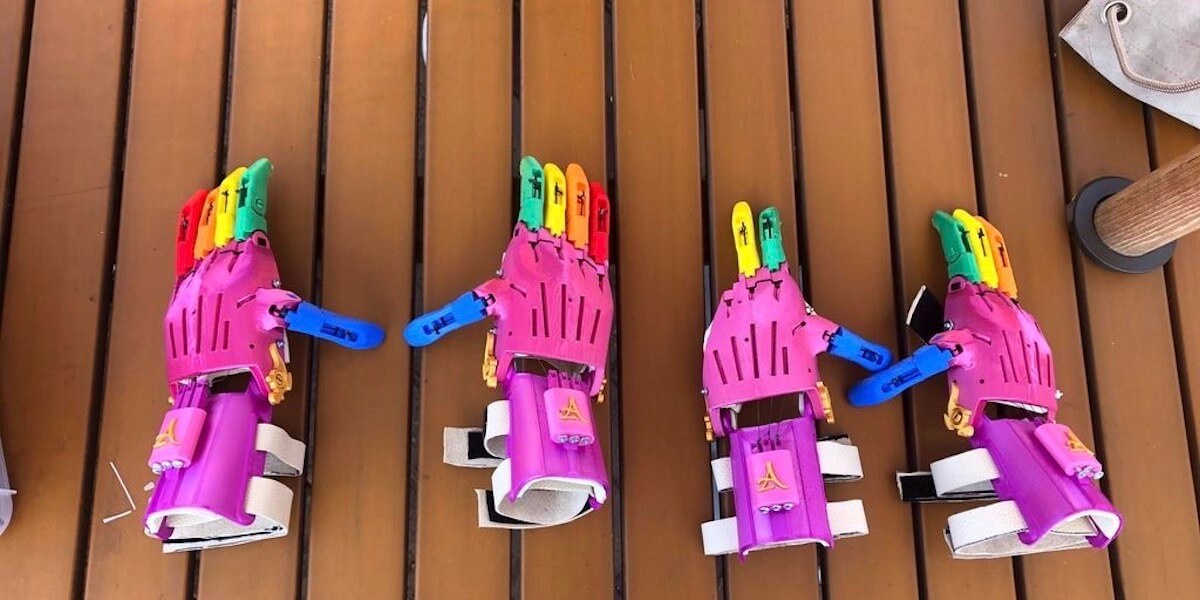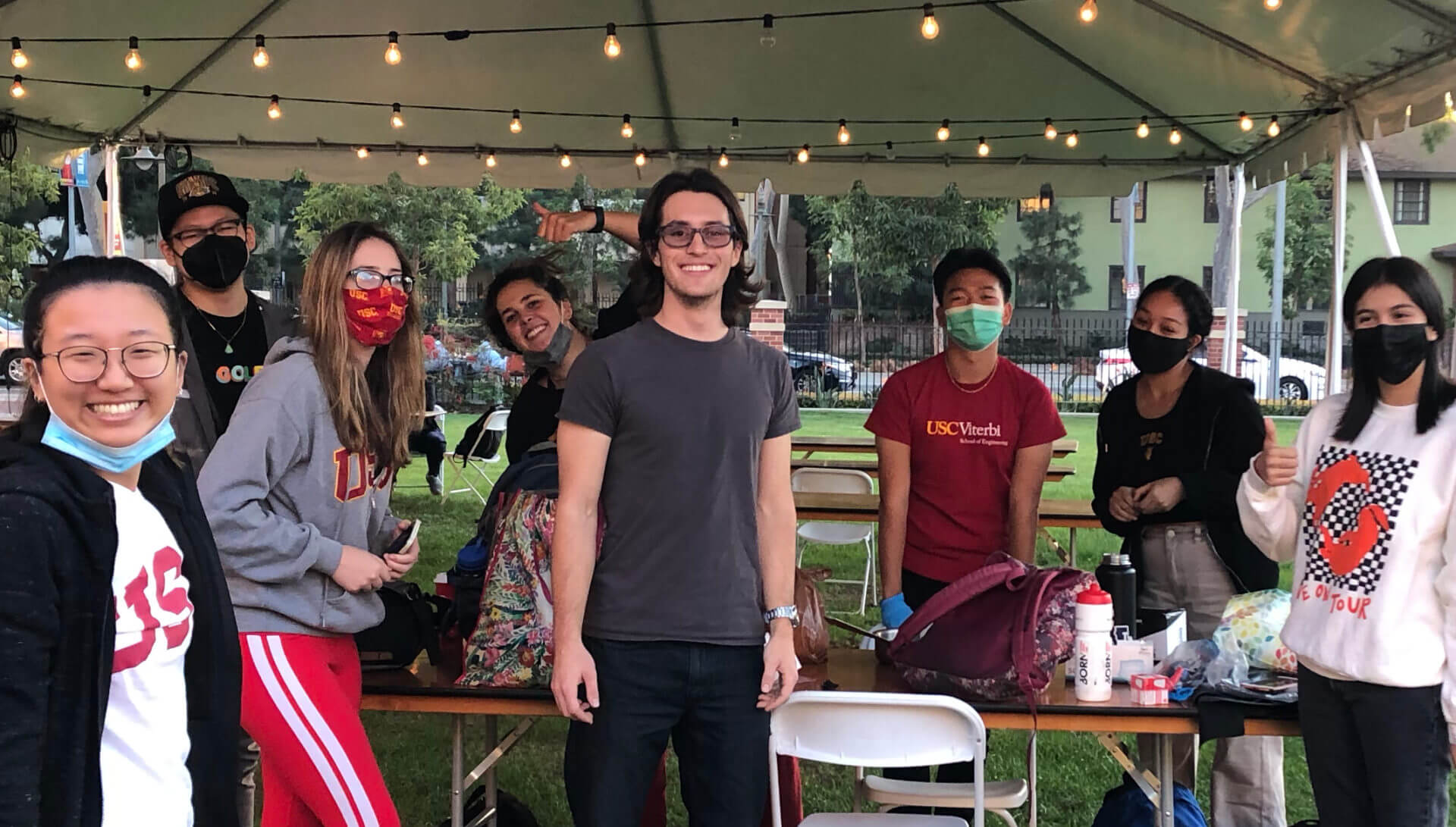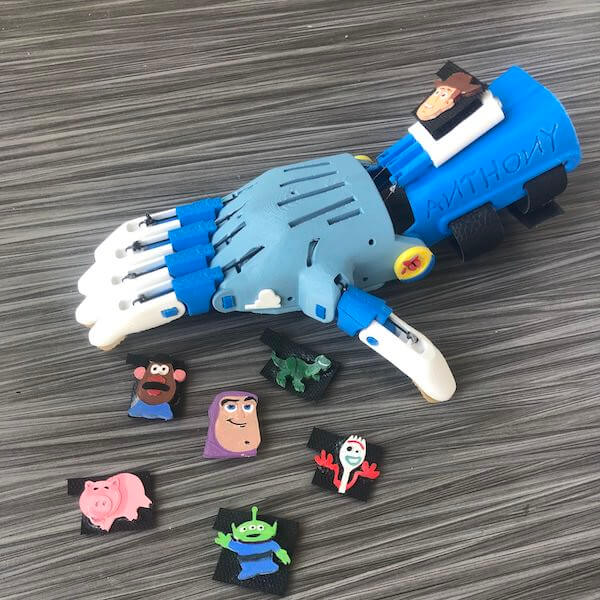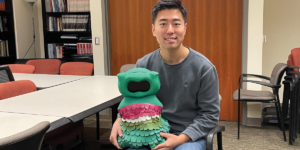
USC Freehand 3D prints colorful prosthetics for kids with limb differences. PHOTO/USC Freehand.
A fundamental part of how we interact with the world is focused on how we use our limbs. As kids, we climb with our hands and legs, play instruments with our fingers, throw balls and swing bats, all to learn flexibility, dexterity and of course, the joy of playing. Every year, however, thousands of children are born with limb differences, and need to learn how to experience the world through a different tool: prosthetics.
Prosthetics are expensive and kids can grow out of them quickly, all while fumbling to gain confidence in using them—and in being different. But new solutions, like the 3D printed prosthetics created by USC Freehand, a subdivision of the student organization USC 3D4E, can offer cheaper, more flexible options.
Brendan Kim, USC Viterbi School of Engineering sophomore and member of USC Freehand, said: “Prosthetics is a very fast advancing technology. One thing we have to make very clear is this is in no way a replacement hand; you won’t be able to lift heavy objects, but picking up smaller objects and throwing a ball or holding a pencil are things our hands can accomplish.”
USC Freehand works directly with children in the LA-area, mainly through a partnership with the Children’s Hospital Los Angeles (CHLA). The process is collaborative between members of USC Freehand and patients to make sure prosthetics fit well and are customized to patients’ color and design preferences. Each semester, the team of about ten students delivers two or three prosthetics to patients, identified by Dr. Nina Lightdale-Miric, director of Pediatric Hand and Upper Extremity Surgery Program at CHLA and the founder of “CATCH” Hand Differences Program. Each hand takes about a month to a month and a half to complete, from initial consultations, where measurements are taken and specific details of the patient’s condition are accounted for, to printing and final adjustments.
Said Kim, “Freehand involves working with different people—doctors, parents, kids. Prosthetics can be intimidating at first. It’s particularly important to be able to communicate complex ideas to young children, and create a welcoming environment for patients.”

USC Freehand Members. From left to right: Irene Li, Edwin Tieu, Jenna Matus, Claire Haas, Kian Jeshion-Nelson, Brendan Kim, Keyvette Tabb and Ariana Garcia. PHOTO/USC Freehand.
Making of a Hand
The type of prosthetic USC Freehand designs depends on a patient’s arm and hand formation. “A child might have his wrist and palm formed, but the fingers didn’t fully develop from there. The prosthetic could work by flexing the wrist. Or there maybe be no wrist presence, but they do have a fully formed elbow, so we’d connect the prosthetic to the bicep to gain leverage to open and close the fingers by activating the elbow,” Kim said.
The virtual design process, which uses computer-aided design, is the first step. A team member will also work to scale certain designs, like Spider-Man’s web, to make sure it fits the prosthetic. Once the designs are finalized, the files are taken to the Baum Family Maker Space, where the pieces are 3D printed. Sometimes, these prints can fail, Kim said, so they try to print early in the week, leaving space to address any issues.
Once all the parts are printed, USC Freehand members come together to assemble the hand. The pieces are refined—perhaps sanded to smooth out any rough edges. The final prosthetic is assembled and tested to make sure all the pieces work properly. From there, patient delivery is scheduled, at which time the patient tries out the hand. Additional changes are made subsequently, as needed.
Said Kim, “Generally the part that may need adjusted is a piece called the gauntlet (the part of the glove that covers the wrist). It is printed flat and we dip it in hot water to make it more of a dome shape. What’s great about this is patients can adjust this piece on their own, if needed.” For example, last semester a virtual patient’s prosthetic didn’t fit perfectly but his mother was able to adjust the sizing to him by removing the gauntlet, dipping it in boiling water and remolding it, Kim said. This process can be repeated infinitely.

USC Freehand prosthetics offer fun character customizations for CHLA patients. PHOTO/USC Freehand.
The team focused on patients of elementary age (three to ten years old, broadly). A big factor, Kim said, is evaluating the child’s limb size, which might be too small or large for the prosthetics USC Freehand delivers. A typical hand uses PLA filament, which is very lightweight. The hand can grip and hold light objects, and can be easily reprinted if a piece breaks in the future.
The team uses printers from USC 3D4E, which also funds their work, so they are able to offer all prosthetics free of charge. They also use open-source computer-aided design files (created by a volunteer community called Enabling the Future) as blueprints to build their prosthetics. Recently, they began exploring new innovations such as Andrej Dukic’s Maker’s Hand. The Maker Hand is an ambitious project to create a 3D printed hand on par with more advanced, expensive prosthetics.
Said Kim, “Andrej sent us his files and we hope to bring his innovation to the LA-area. It’s definitely more advanced than any prosthetic we’ve ever made, so it would be a slow rollout, and initially more a part of our research and development operations.”
Building Confidence for the Future
Many children struggle not just with the use of prosthetics, but with gaining confidence in having a limb difference in the first place.
Said Kim: “The goal of our prosthetics is not necessarily to be a replacement hand, but more of a confidence-builder for these kids. Growing up with a limb difference can be challenging, especially psychologically, so we want our patients to be proud of the process.”
Kim said that’s why they work with their patients to customize the prosthetic. “Choosing their own designs, making it more personal to themselves means they can wear the prosthetic proudly,” he said.
The prosthetics come in different designs—including different colors and decals, like an Iron Man or Toy Story theme.
The prosthetics allow the kids to develop experience in use of prosthetics, so they can move on to more advanced prosthetics in the future, Kim said. “I like to think we’re setting them up for bigger and better things.”
Published on February 1st, 2022
Last updated on February 24th, 2022











